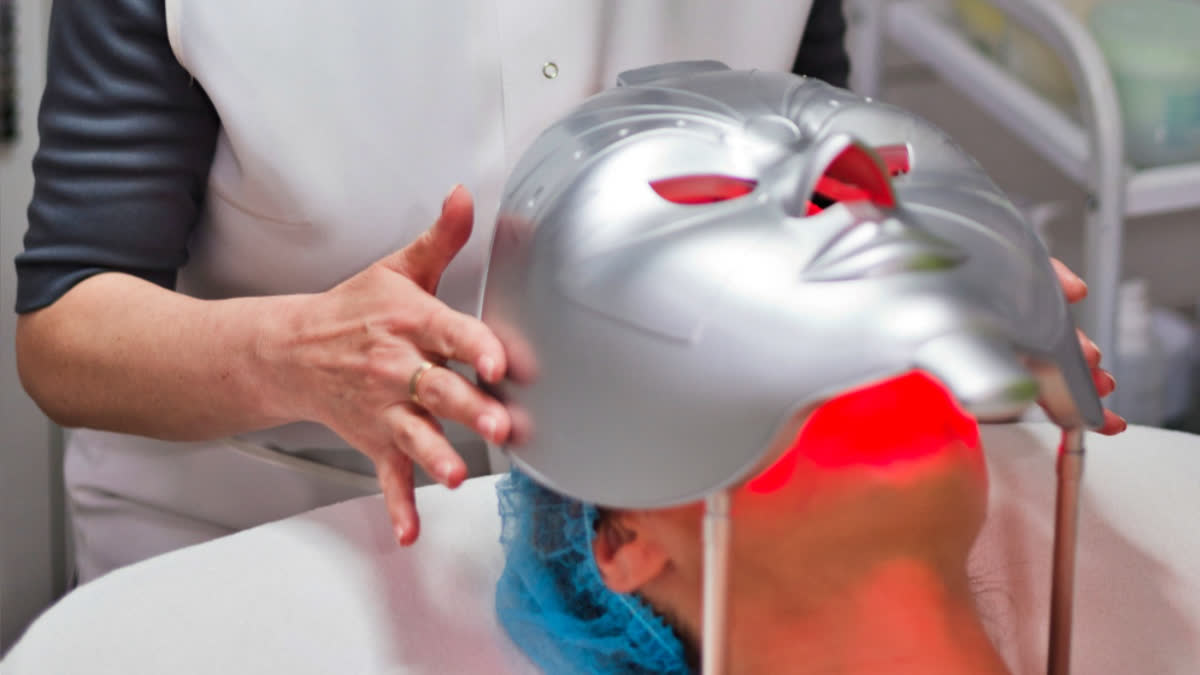Red light therapy (RLT) is emerging in India as a natural and non-invasive solution to combat signs of ageing like fine lines and wrinkles. Unlike Botox or cosmetic surgery, which offer quick fixes but involve injections or invasive procedures, red light therapy provides a gradual, holistic approach to rejuvenating the skin.
While it has been popular with international beauties like Kim Kardashian for a while, celebrities in India have also been sharing their positive experiences with RLT. Bollywood actress Deepika Padukone shared her picture on Instagram wearing an LED light mask, while pan India actress Samantha Ruth Prabhu credited the therapy as one of her beauty secrets on social media.
What Is Red Light Therapy?
“Red light therapy [also known as Low-Level Light Therapy (LLLT)] involves exposing the skin to light in the visible red and infrared spectrum using LED devices,” says Dr. Jaishree Sharad, a renowned cosmetic dermatologist in Mumbai. The low-power light penetrates the skin, stimulating the production of collagen, reducing inflammation and enhancing blood circulation.
According to Lalita Arya, Vice-President at Derma Puritys Aesthetic Clinic, “The treatment works at a cellular level to promote tissue repair and increase blood flow, leaving the skin firm and glowing. It is effective for skin conditions like acne, rosacea, hyperpigmentation, and even eczema.”
By targeting collagen production and reducing inflammation, RLT addresses both surface-level and deeper signs of ageing, offering a natural path to youthful skin.
How Does RLT Compare To Botox And Cosmetic Surgery?
“Unlike Botox, which temporarily paralyzes facial muscles to smooth wrinkles, RLT promotes natural healing and collagen growth,” says Arya. While Botox offers immediate results, red light therapy requires patience and consistency for gradual improvement.
RLT is more affordable and widely accessiblecompared to Botox or surgical options. “Even in tier-two and tier-three cities, at-home devices and in-clinic services are available,” says Dr. Sharad.
“RLT is safe for all skin types, including sensitive and dark skin,” notes Arya. However, Dr. Sharad advises caution for individuals with photosensitivity or those on medications like isotretinoin. Always consult a dermatologist before starting therapy.
Long-Term Benefits:While Botox and fillers require regular maintenance, RLT offers cumulative benefits that improve the skin’s overall health.
Key Benefits of Red Light Therapy
- Reduces Fine Lines and Wrinkles:RLT promotes collagen and elastin production, essential for firm and plump skin, which reduces the appearance of fine lines and wrinkles over time.
- Improves Skin Texture And Tone:The therapy aids in healing damaged skin and promoting an even skin tone by improving circulation and reducing hyperpigmentation.
- Soothes Inflammation And Acne:Dr. Sharad highlights that RLT can also help combat acne by targeting Propionibacterium acnes, the bacteria responsible for breakouts.
- Treats Various Skin Conditions:“From rosacea and photodamage to conditions like psoriasis and eczema, RLT offers a broad range of benefits,” notes Arya.
- Non-Invasive And Painless:Unlike Botox or surgical options, RLT is entirely non-invasive, causing no downtime or significant side effects.
Comparing RLT In Clinic vs. At Home
